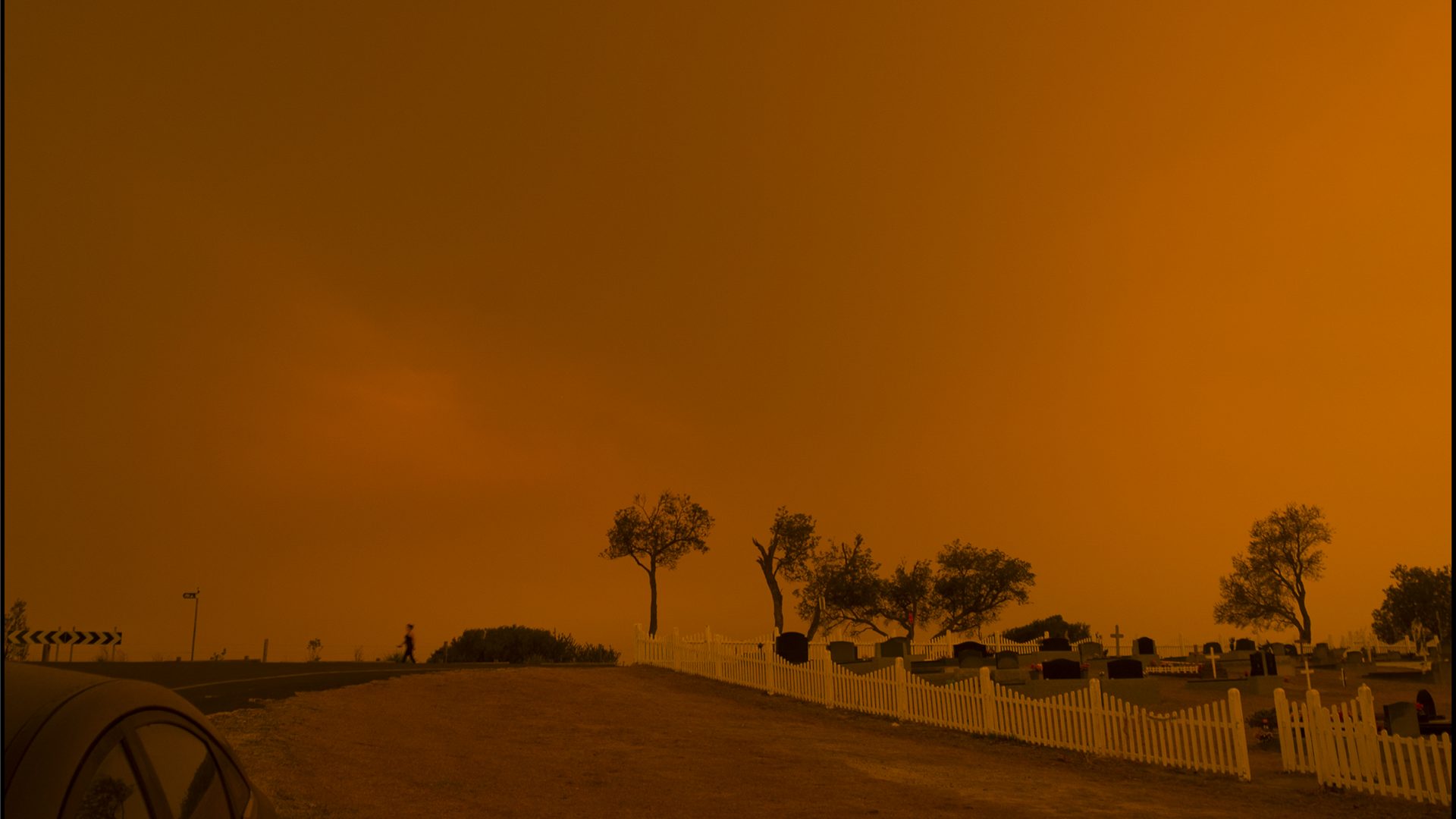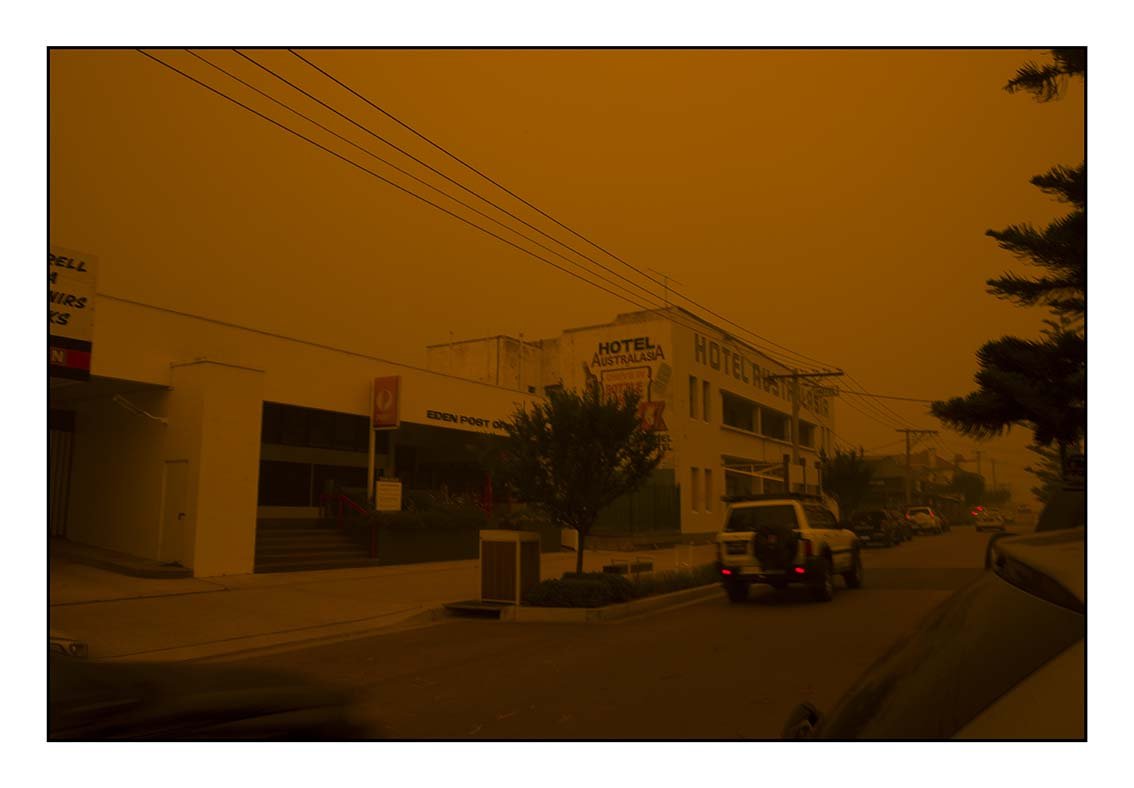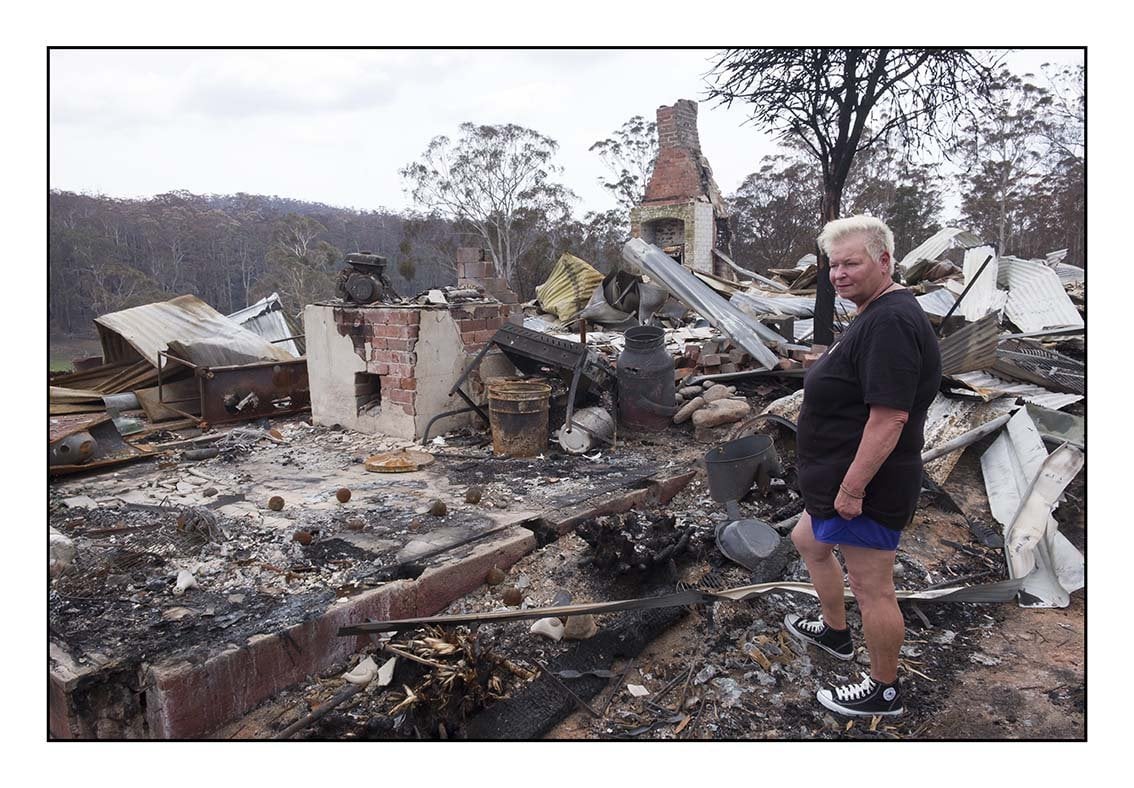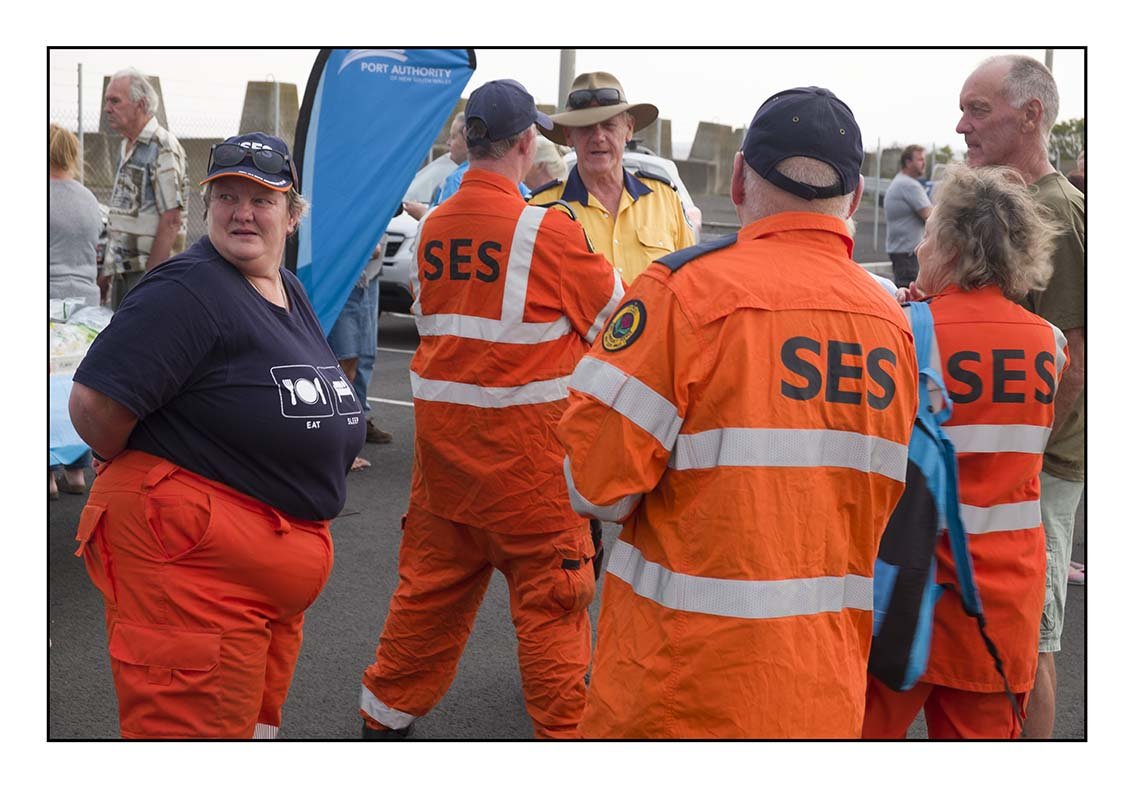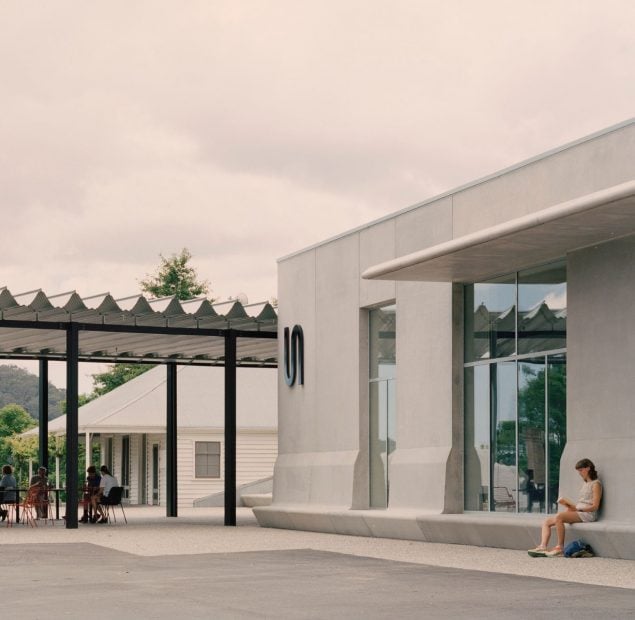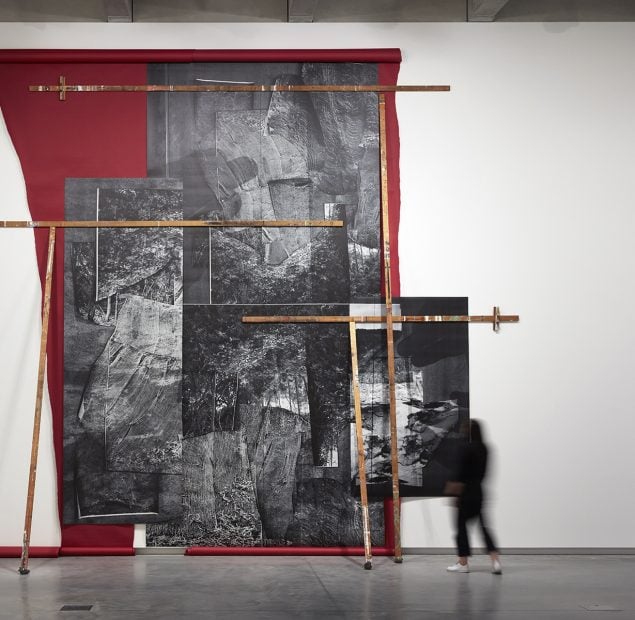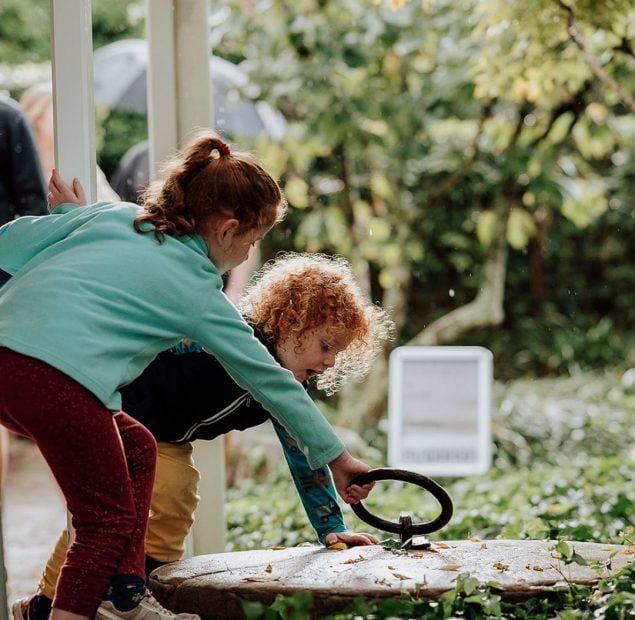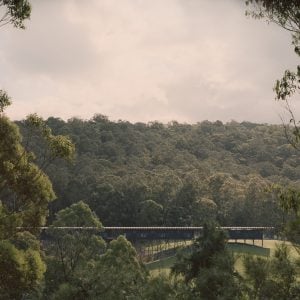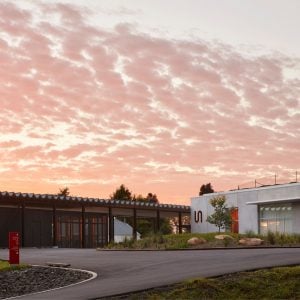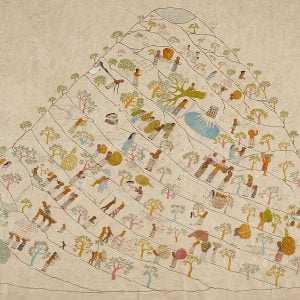Sophie O’Brien, Head of Curatorial and Learning at Bundanon talked with artist Ruth Maddison about her practice, her connection with communities, and the terrible fires that swept through Eden in January 2020.
Sophie O’Brien: Hello Ruth, lovely to speak with you.
Ruth Maddison: Yes, really.
SO: You are an artist that responds to community, the place you are in and the relationships you have built. What were the circumstances that meant you were in Eden during the time of the fires? And have you done this type of work before, documenting a time of crisis?
RM: It has happened before, in my working life. In 1989 when I was living in St Kilda in Melbourne we were flooded in our street.It was this incredible situation – we had over 100mls of rain within one hour, it was a king tide. It was a confluence of events. A metre of water came into the house and cars were floating down the street. I grabbed the cameras and got out. Because it was a street with a lot of old people and little kids, we were ferreting people and babies up to the only two-story house. Then I started photographing, standing in the water. All our houses were a complete mess!
I now live in Eden, where these fire photos were taken.I have been documenting everyday life in Eden since I came in 96, specifically the industry – timber and fishing and teenagers growing up in Eden – with image and text, which is part of my documenting history. I’ve been building up a lot of that work which is now owned by the State Library of NSW Picture Collection, and the National Library of Australia Picture Collection.
[During the December/January 2020 fires] my daughter and grandson were up from Melbourne for Christmas and were locked in for a few days. When the road opened, they jumped in the car and said,“come with us”. That was on the morning of the 31st. But I wasn’t moving until I knew what was happening with the Bermagui mob -so,I stayed and started walking around the town. That incredible red is how it looked; you know that orange red. I went down to the sport oval where I knew there was going to be an evacuation centre set up. Holiday makers started pouring in and they were setting up on the oval, so I did what I do. I started photographing.
I eventually evacuated on the 2nd January for 14 days. When I came back,my place was fine, and my town was fine but Kiah, 14k down the road, had been badly burnt, like a lot of places. Annette [in the photographs] is somebody that I know.Her house was burnt, and she said “Can you come out with me? Can you take photos?” and I’ve been doing that since that day, up along Kiah Road and her property, and going back subsequently.
SO: Flood and fires – these are big moments in time that have a profound impact personally, as well as on communities.
When you returned, you mention much of the landscape and places you knew had been devastated. You speak about that loss being made manifest through the silence and sheer scale of devastation. There are works in the exhibition that capture this sense, the crises of the moment, the large panorama in particular. Can you talk us through the experience that led to that image?
RM: I think that [photograph] was taken within a day or two of coming back. I had run into Annette, who told me her place had gone. Annette and I drove out to Kiah, and I was in shock – we were less than 5k out of Eden and there were burnt trees on the road. I hadn’t realised it had come so close. It was just burnt 12 -14k along the Princes Highway until you turn into upper Kiah Road. We pulled up on the Upper Kiah Road some kms before Annette’s property and it was black, an unbelievable black. I was stunned silent. I asked her to pull over, I just wanted to get out of the car and experience it and feel. It’s not like anything I had ever seen before. I had seen it in pictures, but it’s just such a different thing [being in it].
SO: And the smell and ash. It’s very particular.
RM: Yes. So, Annette pulled over, I got out and that was it. As I opened the car door, I was hit by silence. It was a physical thing and… nothing, nothing just nothing. It’s extraordinary because you think about all the sounds that you hear normally when you stand in the bush. You hear the wind, you hear leaves, you hear the birds, you hear the odd something. Is it a snake? Is it a skink? And you hear bigger things, a wallaby? That silence in that environment is wrong,it’s a dream, and the colour, the look, that black… that’s why I did the panorama. That’s what I saw – the silence and that black. It is an extraordinary experience, very potent and very powerful.
SO: There is something in that scale, the unexpected nature of the scale of it that seemed to hit people. The Australian bush has an amazing capacity to recover (although there will be landscapes that will not have the same biodiversity) but generally the capacity for renewal is astonishing. You capture this in the photographs you took over the course of that period – both with landscape and people, for example Annette remaking her house and the community coming together. There is a comparison there in terms of strength, capacity and how the environment and human interlock.
RM: Yes, I feel it’s also to do with the individual though, Annette is very particular. Right from the start she was like “Ok I have to get on top of this and take charge. I’m not going to be pulled down. What’s my rebuild process, what’s the design, what do I want?” I know people who have taken different steps, some people are still going through hell with money and insurance and some people are still kind of befuddled by what they have to do.It’s all so individual.
SO: I’m sure there are a whole lot of factors, in each individual case. It is astonishing to see that capacity to step up during adversity.
RM: Absolutely, there is a lot of that [in the community].
SO: There is real democracy between you, the people and the things you are photographing. We get the sense that the photographer is very much a part of what’s happening. It doesn’t feel staged. Do you feel that? Is it an approach you have taken throughout your work and practice? Or does the viewer feel it more because of the challenging things that are happening and that you are documenting?
RM: Thank you for saying that, it means a lot. It has always been my approach.
I am self-taught. I have never been to art school or had any formal training. I kind of moved from one life into a life of photography.I have always been interested in the nature of an individual’s life,that to me,is both extraordinary and ordinary at the same time. There is more that unites us than divides us. I think that comes from my background.
So, when I picked up a camera, I just wanted to photograph everyone in the world. Life stories are always fascinating to me. I like using text from interview in a lot of my documentary work. If I’m working on a particular project, I have specific questions, and I take notes or record and edit later. I want the voice to be that of the person I’m photographing and the text and image to contextualise each other.
SO: Can you tell me about the artistic decision for the black border around these images? It acts as a containment, so to speak.
RM: Historically I have used black as a border, certainly my darkroom black and white photos. I had filed my negative holder so that I could get the black edge around the actual negative and actual negative and then when I went digital, I now make it digitally. Initially I didn’t have it there with these images but once I started to put the images onto the white sheet they seemed to float too much. So, I started doing the black edge and thought ‘’yes, it’s framing it’’.
SO: It’s grounding and for me it intensifies the images. You need to feel their intensity and without that border they could be a thought, a potential or a moment. But with the frame it has a new focus – this is what you saw, this is what was captured, and this is what was happening.
SO: With this body of work, the crisis you are responding to occurs quickly. Your first instinct was to pick up your camera.Is it always an immediate move to action or are there different time frames depending on the project? Is there a planning stage, or does a body of work happen organically, responding as you go?
RM: It’s not always immediate.I produce my own work mostly these days. I have a history of collaborative work, freelance and commission projects, [but] since I moved to Eden, it’s more about producing my own work, relating to things of interest to me. The first series I did in Eden was a documentary project called Now a river went out of Eden.It was a series of photos of teenagers with text. I asked them “tell me about growing up in Eden and where do you see your future?” because for me, I had never lived in a small town before and I very quickly saw it as a parallel universe to a city – a small working-class coastal town.It was a shock. I was thinking “what happens, what do the kids do here?” because there is nothing, there is the beach… but there is no book shop, no theatre, no movies, there’s barely any other languages spoken. I was interested: if the young people grow up and leave, what happens in a town like this?
Eden is often called the ‘fish and chips’ town because of the two industries [timber and fishing] that support the town economically, but they are contentious industries.The issue of work is very complicated in a small town, everyone has to pay their mortgage, send their kids to school etc but there are very few jobs. So, all of that is very interesting to me… a workplace is a community of people.I had never seen what goes on in those industries. I photographed both men and women and asked, “Tell me what your job is? Tell me about the best and the worst of your work? What do you think is going to happen for this industry?”
Picking up the camera changed my personality; the camera led me and gave me a career that changed my personality. I was socially inept until I was well into my 20’s… very introverted. Even now it is often a way for me to be in public spaces and places with a lot of people.
SO:It also allows you to be curious and open. Some people describe a camera as something to hide behind and I’m sure for some it is, but in this case, it feels like a path towards immediate relationship.
RM: It allows me to follow up that curiosity and act on it, to explore that curiosity further and it’s not always thought out. For example, in getting my survey show together,I look at my work now from the 70’s, 80’s and 90’s and it’s just wherever I am. I was taking pictures without forethought;I had my camera always.
But when I moved to Eden I was over documentary, after 25 years. We were living somewhere new, quite different, new things would happen. And new things did happen – a whole bunch of new work with new people. The town felt so foreign to me and was so interesting it dragged me back into documentation.
SO: Many artists are now using the documentary form and idea of documentation in new ways. Your practice is witnessing, especially in a new place; you have a fresh eye.
RM: It’s true, I’m aware of current photographers making documentary in new ways, as you say, and that have different approaches. I see work that is really fascinating, intriguing and inspiring. But at the moment, currently, I feel stuck in the past with my survey show. It’s exciting but it feels like it has been going on for so long now. I can’t wait to be making new work, to be playing. And I wonder what will happen next?

